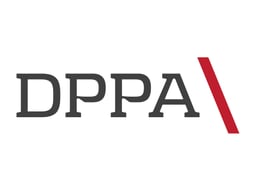We’ve done it: the UNGC Communication on Progress 2025 report
Established by the UN, the United Nations Global Compact unites businesses and institutions in working towards a more just, transparent and sustainable future. Today, it is the world’s largest initiative bringing together businesses and organisations around the idea of sustainable development. And we are an active and committed member. We have just confirmed this by submitting our third Communication on Progress report, which certifies our commitments to act in accordance with the highest ethical standards and principles of responsible business.
We have submitted our Communication on Progress 2025 report
The Communication on Progress (CoP) report is an annual public report in which we present our activities and progress in implementing the Ten Principles of the UN Global Compact and the 17 Sustainable Development Goals (SDGs), which include:
Respect for human rights
Fair business practices
Counteracting corruption
Environmental protection
CoP is proof of our transparency and demonstrates our consistent efforts to conduct our business responsibly with future generations in mind, says Diana Tavera, Partner at Kochański & Partners.
We were the first law firm in Poland to establish an internal ESG Committee, and reporting is just one of its tasks. Although this is a demanding process involving various areas of the firm, it helps us analyse our activities and translates into tangible decisions regarding responsible business, adds the initiator and chair of the Committee.
We are raising our corporate governance standards
We have implemented a number of internal policies and procedures that reinforce our organisational culture, which is founded on ethics, integrity, and sound management. These include the Sustainable Business Policy, the Anti-Bullying and Anti-Discrimination Policy, the Code of Ethical Conduct, the Diversity and Inclusion Policy, as well as a number of regulations and procedures relating to cybersecurity, all of which reflect the highest standards of business management. These documents enable us to engage all our employees in ESG activities.
The CoP report also provides an opportunity to summarise the effects of our activities, including those related to equality. One such effect is that important positions such as Chief Financial Officer, Chief Human Rights Officer, People & Culture Executive, Labour Relations Executive, and Chief Sustainability Officer, as well as partners and leaders of many legal practices at Kochański & Partners, are held by women.
Companies around the world recognise the importance of sustainable business practices
The importance of reporting is clearly visible on a global scale. Almost 11,000 companies from 149 countries submitted their CoP reports in 2024 alone, and over 47,000 reports have been produced worldwide since the programme’s launch. Notably, the majority of organisations (73%) opted to use the standardised UNGC questionnaire, demonstrating the value that companies place on transparency and data comparability.
It is also becoming increasingly clear that ESG reporting is evolving into a strategic issue. The vast majority of companies (as many as 80%) involve their management boards in this process, meaning that sustainability issues are treated as the foundation for business decisions rather than just an add-on. UNGC members are a diverse group – 54% are small and medium-sized enterprises, while the remaining 46% are large companies. They all however share a common belief: that business should be conducted in an ethical and responsible manner.
Their priorities clearly demonstrate that human well-being lies at the heart of their activities:
87% of companies identify employee health and safety as the most important issue
78% emphasise the importance of gender equality
The reports also reveal areas that require further work, as only 25 to 40 % of companies extend their sustainability policies across the entire value chain. This leaves enormous potential for joint development and sets the direction for the coming years.
In 2024, the highest level of commitment was declared by companies in the following four areas:
Gender equality
Safe and healthy working environment
Efficient use of energy and resources
Anti-corruption compliance programmes
These issues are now setting the global standard for responsible business and providing a benchmark for all participants in the initiative.
Kochański & Partners are once again pioneers in their industry
When we joined the United Nations Global Compact in 2022, we paved the way for other law firms and consulting companies to follow suit. Thanks in part to the CoP regular reports, we have since been among the thousands of companies and organisations from around the world working to make business a force for positive change. The CoP is not just a formal obligation; above all, it is a tool for measuring our progress. We are not only committed to meeting standards, but also to improving them. Just as we consistently develop in the spirit of ESG, we are fully committed to supporting our clients in doing the same. Together, we can build value that goes beyond the scope of business.
Kochanski & Partners - November 4 2025






















